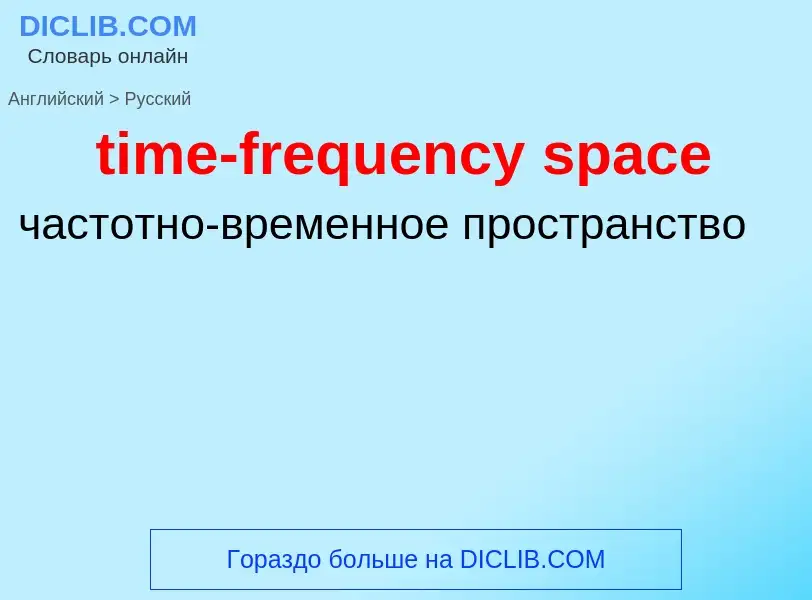Tradução e análise de palavras por inteligência artificial ChatGPT
Nesta página você pode obter uma análise detalhada de uma palavra ou frase, produzida usando a melhor tecnologia de inteligência artificial até o momento:
- como a palavra é usada
- frequência de uso
- é usado com mais frequência na fala oral ou escrita
- opções de tradução de palavras
- exemplos de uso (várias frases com tradução)
- etimologia
time-frequency space - tradução para russo
[speiʃiəu'temp(ə)rəl]
прилагательное
общая лексика
пространственно-временной
математика
пространственноподобный
Смотрите также
Definição
Wikipédia
A time–frequency representation (TFR) is a view of a signal (taken to be a function of time) represented over both time and frequency. Time–frequency analysis means analysis into the time–frequency domain provided by a TFR. This is achieved by using a formulation often called "Time–Frequency Distribution", abbreviated as TFD.
TFRs are often complex-valued fields over time and frequency, where the modulus of the field represents either amplitude or "energy density" (the concentration of the root mean square over time and frequency), and the argument of the field represents phase.


!['''here''']]. '''here''']].](https://commons.wikimedia.org/wiki/Special:FilePath/Accelerated relativistic observer with horizon.png?width=200)



!['''Click here to animate.''']] '''Click here to animate.''']]](https://commons.wikimedia.org/wiki/Special:FilePath/General relativity time and space distortion frame 1.png?width=200)











